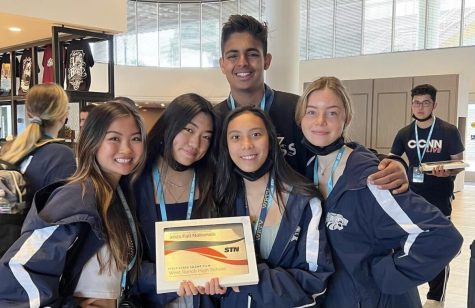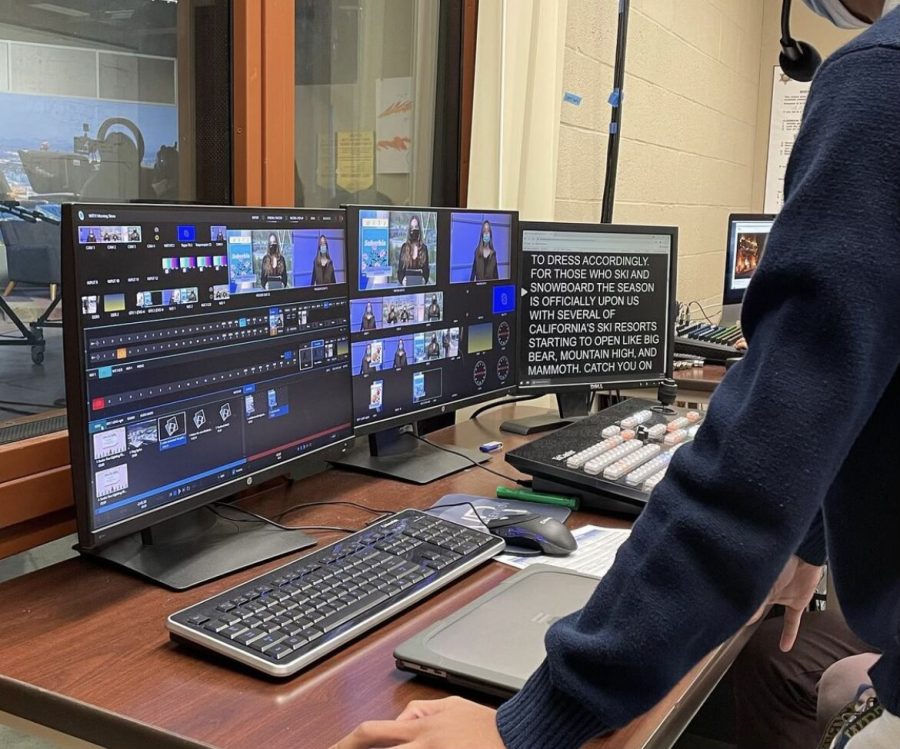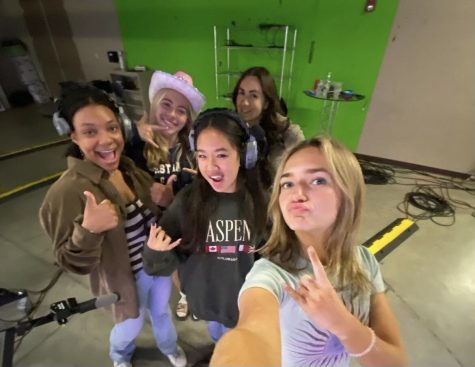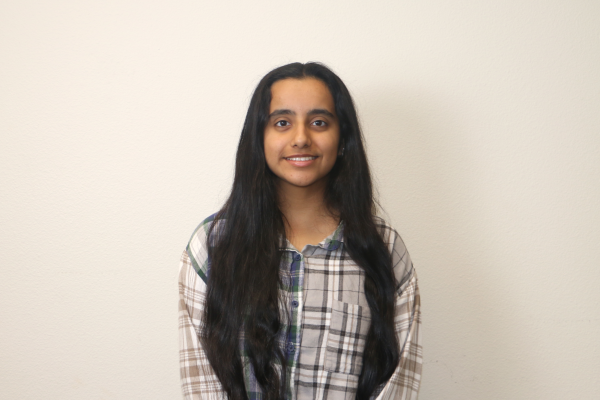Behind the scenes of West Ranch TV
April 12, 2022
West Ranch TV, or WRTV, is the daily live broadcast for the student body at West Ranch. Featuring a variety of content including news segments, student spotlights and short films; students are able to see the shows every morning.
The production is made possible by the hardworking and diligent students of WRTV. Mrs. Overdevest, the advisor, is an essential part in creating an organized and structured environment for the students.
“I’m teaching students skills that they will use long after graduating high school. Working with their peers, meeting deadlines and figuring out how to navigate the pressure of working on a live production,” Mrs. Overdevest said.
For many Wildcats, WRTV is an opportunity to get a more in-depth experience in the film or broadcast industry, especially for those who seek a future career related to television production.
Mrs. Overdevest expressed, “It is such a joy to see the students overcome technical issues and create a really good show. Watching students’ leadership skills emerge is also one of the highlights of my job. I’ve seen a lot of my students for four years and to see them grow so much from freshman year to senior year is the best part of my job.”
West Ranch junior and prior WRTV member Madison Haynes said, “I want to go into broadcast journalism in the future so this program is a great way for me to get a foot in the door while making friendships with the other students in the class.”
Prerequisite
Prior to applying to WRTV, students must take Video Production 1A and 1B to develop a basic understanding of cameras, editing programs and group work. The course trains students in understanding the use of digital cameras, computer editing, script writing and storyboarding.
Towards the end of the course, students will have developed an understanding of how to produce their own videos for a variety of purposes.Students who successfully complete the course are able to apply to be in the WRTV program the following year.
Behind the Scenes
Behind the scenes of WRTV, there are many factors contributing to the success of the productions. Each grade of students are tasked with specific tasks.
Sophomores: Sophomores are expected to generate as many segments as possible in order to better develop their editing and storytelling skills. They usually run the cameras and teleprompter for the live show and create graphics. Typically, tenth graders host the show more often during spring semester.
Juniors: For eleventh graders, their jobs are to run the cameras, audio board and teleprompter. While they have seniority over the sophomores, they are still expected to make content and graphics.
Seniors: With the experience seniors compile throughout their years in the program, they act as the producers and directors. They are in charge of the show, organizing the content, overseeing the live interviews and making sure everything is complete in a timely manner.
Job Roles
Producers: Producers break down the show, otherwise known as a rundown creator. Not only are they responsible for scripts to be accurate and clear, they ensure that content being aired is of the best quality and that jobs are being assigned to students the next morning.
Director: When it comes to the control room and technological responsibilities, these tasks go to the directors. Additionally, directors act as those who physically control the show and oversee the audio, teleprompter and cameras. They also display graphics and content when directed by the producer.
Audio: For those in charge of audio, they are tasked with ensuring that viewers are able to hear reporters speaking clearly, as well as making sure the microphones are charged. Furthermore, audio managers unmute and mute microphones during the show.
Teleprompter: Ensuring they are paying attention to pacing, the person in charge of the teleprompter not only manages the device but also makes sure that the hosts are on time.
Cameras: Camera workers use headsets to communicate with the director. They zoom the cameras in and out and have to know all the shots in the show.
Graphics: Students in charge of graphics are responsible for making the lower thirds (the pop up with the hosts’ name or information, a full screen graphic, the schedule, sports information, or name announcements) during the show. The program they use is called AfterEffects, and these WRTV students must ensure everything is exported correctly to avoid technical difficulties.
Anchors: Anchors create scripts, graphic templates, names, titles and more.
West Ranch senior Chris Taguba has seen first hand the preparations of WRTV. “Every tutorial, the producers finalize our scripts and assign people to direct and operate the cameras, audio, and production systems,” Taguba explained. “During class, we run through the show to prepare for the actual livestream. If someone’s not in the studio, they are in the post-production room writing, filming and editing segments to air.”
The students not only work during school hours, but after school as well. Everyone is busy with a special task or assignment that they contribute to the production.
West Ranch TV Challenges
Although WRTV continues to showcase a production nearly everyday, the elective doesn’t come without hardships and on some occasions, difficulties to get a show out.
Sophomore Kathryn Perez expressed the challenges of meeting deadlines, managing time successfully and ensuring a segment is perfect.“Sometimes we have a very fast turnaround, like if a segment is for a holiday the next day,” Perez explained. “We may only have one night to write, film, edit and get it finalized.”
The pressure of quickly getting videos into production is what keeps WRTV students on their toes, giving students a feel of what the industry is like. It’s important for students to learn to manage chaos and ensure their video segments are of great quality. These Wildcats have to ensure the information they cover is current and interests the student body, from local to school to even international news.
“Definitely something to be mindful of is problem solving. Sometimes we have a segment fall through or a sudden change in the script and we have to think quickly,” Perez concluded
However, the elective graces its students with learning important life skills, from problem solving to being flexible.
Loving WRTV
Considering the class requires an interview to join, WRTV is a place for students to have their creativity flourish and experience what it’s like to work in videography and news. Students enjoy having the ability to shoot, edit and write scripts for productions that will eventually lead to something worth the effort.
“For me, there is a spectrum of stress and satisfaction. Sometimes you can come up with the best story idea and the result is a very well shot and edited video,” Taguba Added. ”On the other hand, there is a fear of something going wrong at any stage of production. But I think that this aspect of overcoming immediate challenges is something that keeps me in the program, and it’s part of the reason why I like it so much.”
Overall, WRTV provides students with the creative freedom to produce anything that seems interesting to them based on what they believe the student body will enjoy watching. The film and editing elective allows Wildcats to truly find new and interesting ways to convey and present ideas.
“I like having the ability to display my creative freedom in many ways. I could write a story about someone, frame the most compelling camera shots, or edit the coolest looking montage I can visualize. In the same way, I love being able to elevate my creativity with people who have the same passions,” Taguba concluded.




